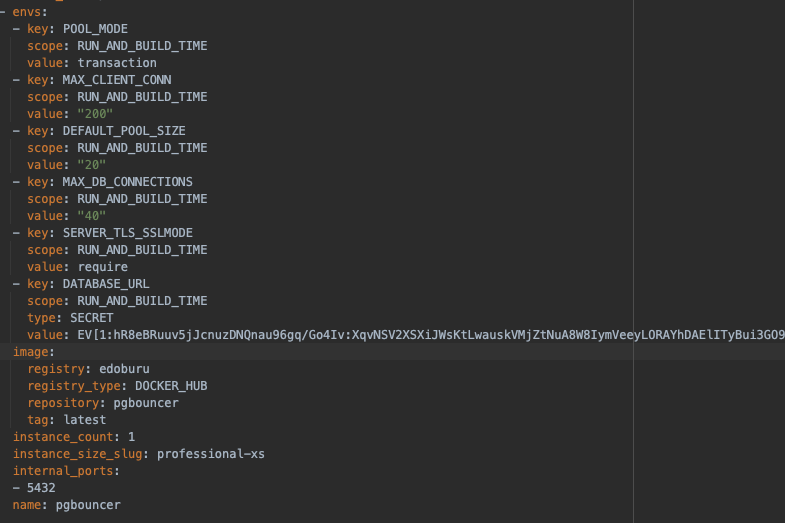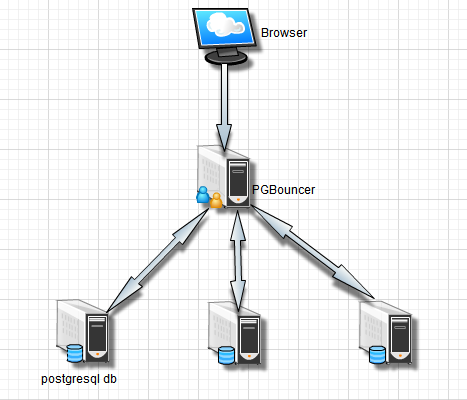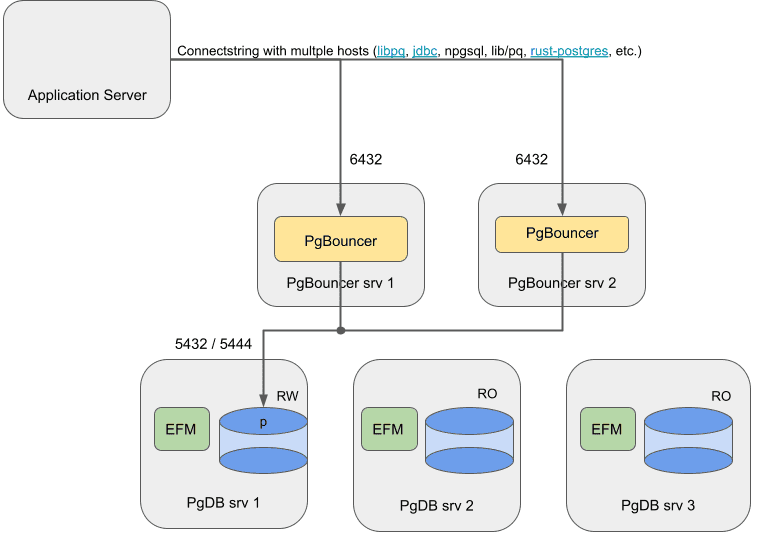

You can read more about this on why to use docker.
#Pgbouncer docker how to
In this post, we will look into how to run and use Postgres with Docker and Docker compose step-by-step keeping things simple and easy. Running Postgres with Docker and docker-compose makes it very easy to run and maintain especially in a development environment. This official feature matrix shows the wealth of features Postgres has.

Postgres (a.k.a PostgreSQL) is an open-source, standards-compliant, and object-relational database been developed for more than 30 years now. Your instance should be working and using PgBouncer.Docker has shot up in popularity over the years. Next up, configure Mastodon to use port 6432 (PgBouncer) instead of 5432 (Postgres) and you should be good to go:Īfter you need to restart your Mastodon services for the system to assume the `.env.production` changes: Since we’re using transaction-based pooling, we can’t use prepared statements. In your `.env.production` file, first off make sure that this is set: Tail -f /var/log/postgresql/pgbouncer.logĬonfiguring Mastodon to talk to PgBouncer You can also check the PgBouncer logs like so: Psql -p 6432 -U mastodon mastodon_production You should be able to connect to PgBouncer just like you would with Postgres: The defaults are fine to start, and you can always increase them later: (In PgHero the number of connections reported will correspond to `default_pool_size` because it has no knowledge of PgBouncer.)

Next up, `max_client_conn` defines how many connections PgBouncer itself will accept, and `default_pool_size` puts a limit on how many Postgres connections will be opened under the hood. So you’ll want to change the `pool_mode` from `session` to `transaction`: In other words, a Postgres connection is created when a transaction is created and dropped when the transaction is done. This next part is very important! The default pooling mode is session-based, but for Mastodon we want transaction-based. Make sure the `pgbouncer` user is an admin: Put `md5` as the `auth_type` (auth_type md5 allows both plain text and md5 passwords): The `listen_addr` and `listen_port` tells PgBouncer which address/port to accept connections. Mastodon_production = host=127.0.0.1 port=5432 dbname=mastodon_production user=mastodon password=pineapple Here we’ll just have PgBouncer use the same username/password and database name to connect to the underlying Postgres database: So here’s a sample `userlist.txt`:Īdd a line under `` listing the Postgres databases you want to connect to. You’ll also want to create a `pgbouncer` admin user to log in to the PgBouncer admin database. You will get this as the result `bc8a988ff49c4d1d8c43c4747c68fc0b` and you prepend the string `md5`, resulting in `md5bc8a988ff49c4d1d8c43c4747c68fc0b`. For instance, to derive the hash for user mastodon with pineapple password, you can do:
#Pgbouncer docker password
The md5 password is just the md5sum of `password+username` with the string `md5` prepended. The first contains the configuration, whereas the second just contains a list of usernames and passwords.Īdd the `mastodon` user to the `userlist.txt` using md5 or plain text: PgBouncer has two config files: `pgbouncer.ini` and `userlist.txt` both in `/etc/pgbouncer/`. There seems to be no way to use PgBouncer with an empty password.ĪLTER USER mastodon WITH PASSWORD 'pineapple' (Note that this guide assumes you aren’t using Docker.)įirst off, if your `mastodon` user in Postgres is set up wthout a password, you will need to set a password. I did some changes to the initial commit by Nolan to the documentation of Mastodon PgBouncer Guide.Īs my pull request is still waiting to be approved, I leave it also here because I had some trouble to get it to work with the instructions that were initially shared.


 0 kommentar(er)
0 kommentar(er)
